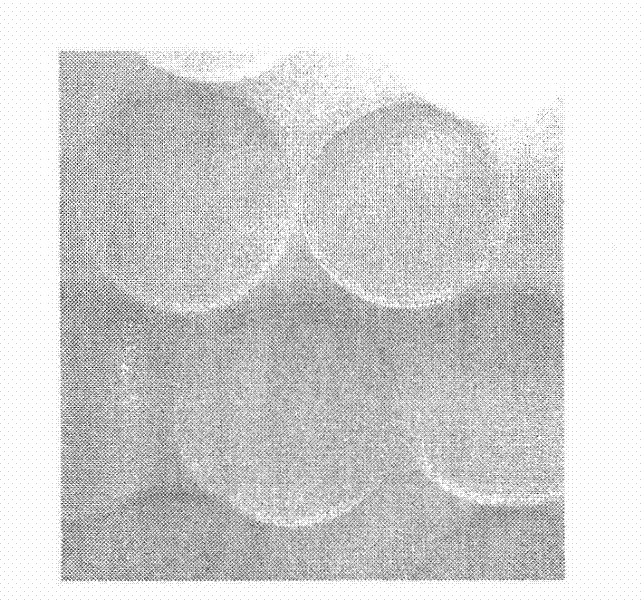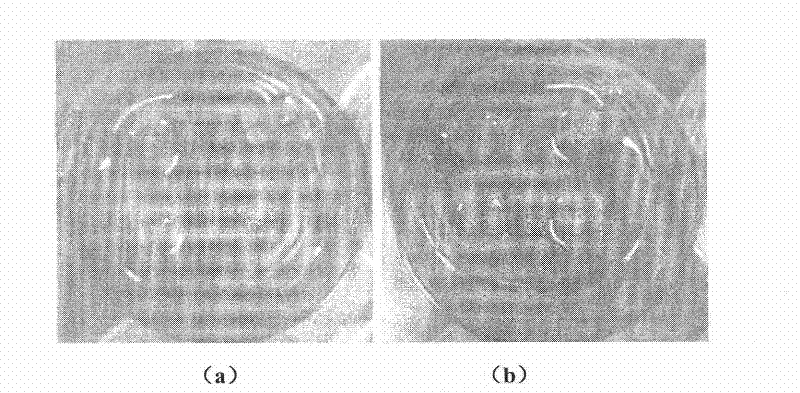Tissue engineering lung tissue and construction method thereof
A tissue engineering and construction method technology, applied in artificial cell constructs, animal cells, vertebrate cells, etc., to achieve the effects of strong practicability, promotion of development, and simple operation
- Summary
- Abstract
- Description
- Claims
- Application Information
AI Technical Summary
Problems solved by technology
Method used
Image
Examples
Embodiment 1
[0049] Example 1 Construction of tissue engineered lung tissue using mouse fetal lung cells as seed cells
[0050] (1) Isolation, culture and identification of mouse fetal lung cells
[0051] Fetal lungs were derived from fetal mice of Kunming mice with an embryonic stage of 18 days. The fetal lung was separated according to the conventional method, then washed in 1×PBS, cut into pieces and digested in 0.25% trypsin-EDTA digestion solution for 20-25 minutes at room temperature. Then add 2 volumes of H-DMEM medium containing 10% FBS to stop the enzyme activity, and then use a pipette to blow and grind. The tissue homogenate was filtered with a 70 μm nylon filter and centrifuged at 800 rpm for 5 minutes. The cell pellet was resuspended in 900 μl of distilled water for 30-45 seconds, the red blood cells were removed by hypotonicity, and then 100 μl of 10×PBS was added. The cells were pelleted by centrifugation again, resuspended in a certain volume of H-DMEM medium containing 10% F...
Embodiment 2
[0061] Example 2 Construction of tissue engineered lung tissue using lung progenitor cells obtained by inducing mouse embryonic stem cells as seed cells
[0062] (1) Isolation, culture and differentiation of mouse embryonic stem cells into lung progenitor cells
[0063] (a) Isolation and culture of trophoblast cells, that is, primary mouse embryonic fibroblasts (MEF): Kunming pregnant mice were sacrificed, soaked in 75% alcohol for 30 seconds, and the uterus was taken out and placed in 100-mm PBS Remove the embryos from the tissue culture dish, remove the extra-embryonic tissues, and rinse with PBS to remove blood. Use sterile forceps to remove the embryo head and internal organs, transfer the embryo to a 60-mm tissue culture dish, and cut it into 1mm 3 The left and right tissue blocks are then transferred to the culture flask and washed with PBS. Pour out PBS, add appropriate amount of trypsin solution for digestion, after repeated pipetting and shaking, let it stand for a while,...
Embodiment 3
[0070] Example 3 Histological and immunohistochemical detection of tissue engineered lung tissue constructed in vitro
[0071] HE staining: fix the cell-scaffold complex cultured in vitro for 7 days using the method of Example 1 with 4% paraformaldehyde solution, dehydrate with alcohol with concentration gradient, embed in paraffin, and prepare slices with a thickness of 4 μm. Conventional HE staining, light microscope observation, from Figure 4 It can be seen that the cell activity is good and can form an alveolar-like tissue structure.
[0072] Immunohistochemical staining: The cell-scaffold complexes cultured in vitro for 7 days using the method of Example 1 were paraffin-embedded, sliced with a thickness of 4 μm, and deparaffinized. After microwave repair, the slices were rinsed with PBS for 5min×3 times, in H 2 O 2 Incubate for 10min, rinse with PBS for 5min×3 times, and act on goat blocking serum for 20min. Vimentin antibody (1:1000) and SpC (1:1200) were used as the prim...
PUM
| Property | Measurement | Unit |
|---|---|---|
| diameter | aaaaa | aaaaa |
| particle diameter | aaaaa | aaaaa |
| thickness | aaaaa | aaaaa |
Abstract
Description
Claims
Application Information
 Login to View More
Login to View More - R&D
- Intellectual Property
- Life Sciences
- Materials
- Tech Scout
- Unparalleled Data Quality
- Higher Quality Content
- 60% Fewer Hallucinations
Browse by: Latest US Patents, China's latest patents, Technical Efficacy Thesaurus, Application Domain, Technology Topic, Popular Technical Reports.
© 2025 PatSnap. All rights reserved.Legal|Privacy policy|Modern Slavery Act Transparency Statement|Sitemap|About US| Contact US: help@patsnap.com



